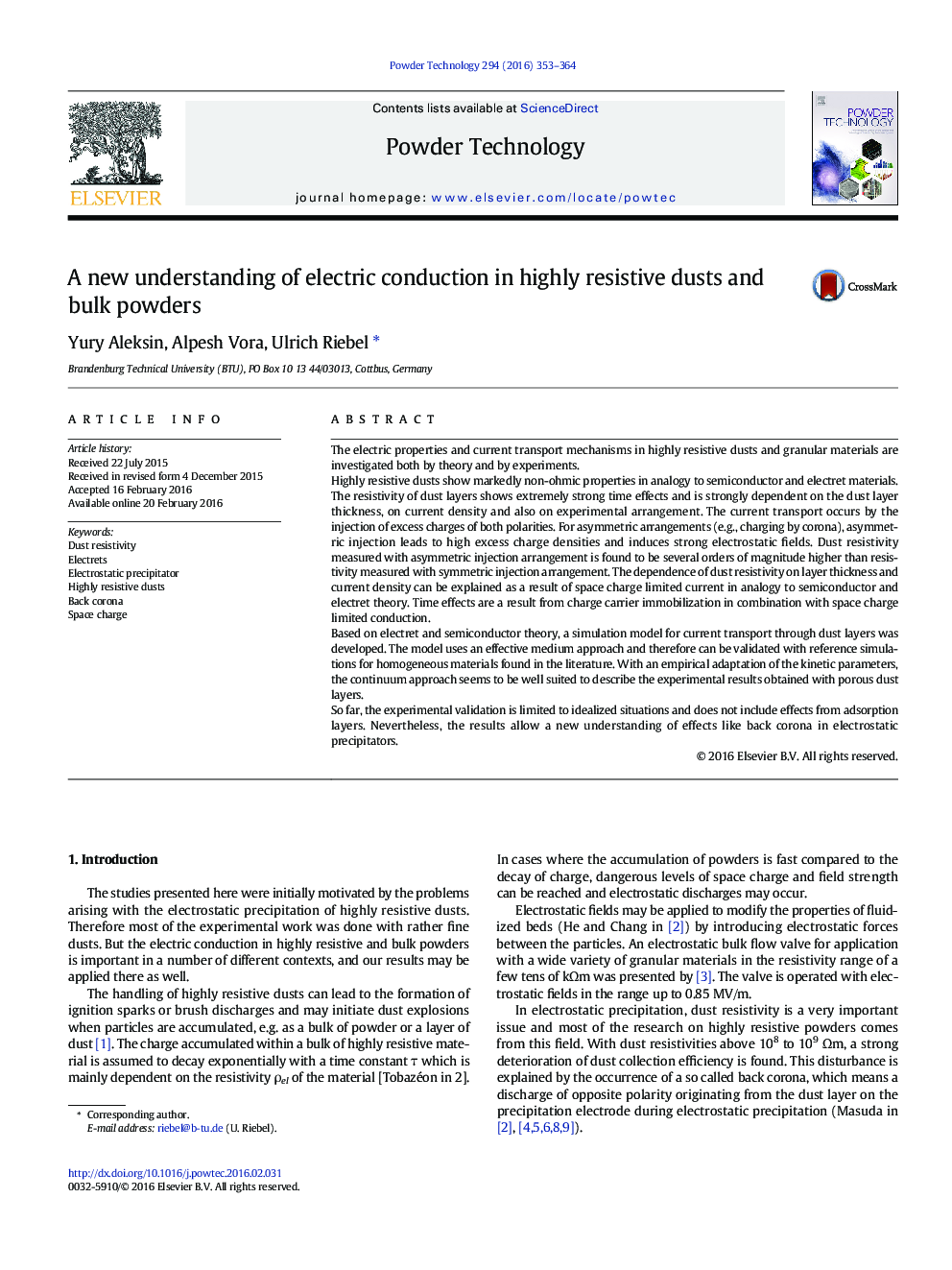| Article ID | Journal | Published Year | Pages | File Type |
|---|---|---|---|---|
| 235079 | Powder Technology | 2016 | 12 Pages |
•Highly resistive dusts and powders show non-ohmic behavior and strong time effects.•Resistivity results strongly depend on measurement setup.•Current transport occurs by injected charge carriers of both polarities.•Gas discharges are present at low field strength (1 kV/cm) already.
The electric properties and current transport mechanisms in highly resistive dusts and granular materials are investigated both by theory and by experiments.Highly resistive dusts show markedly non-ohmic properties in analogy to semiconductor and electret materials. The resistivity of dust layers shows extremely strong time effects and is strongly dependent on the dust layer thickness, on current density and also on experimental arrangement. The current transport occurs by the injection of excess charges of both polarities. For asymmetric arrangements (e.g., charging by corona), asymmetric injection leads to high excess charge densities and induces strong electrostatic fields. Dust resistivity measured with asymmetric injection arrangement is found to be several orders of magnitude higher than resistivity measured with symmetric injection arrangement. The dependence of dust resistivity on layer thickness and current density can be explained as a result of space charge limited current in analogy to semiconductor and electret theory. Time effects are a result from charge carrier immobilization in combination with space charge limited conduction.Based on electret and semiconductor theory, a simulation model for current transport through dust layers was developed. The model uses an effective medium approach and therefore can be validated with reference simulations for homogeneous materials found in the literature. With an empirical adaptation of the kinetic parameters, the continuum approach seems to be well suited to describe the experimental results obtained with porous dust layers.So far, the experimental validation is limited to idealized situations and does not include effects from adsorption layers. Nevertheless, the results allow a new understanding of effects like back corona in electrostatic precipitators.
Graphical abstractFigure optionsDownload full-size imageDownload as PowerPoint slide
